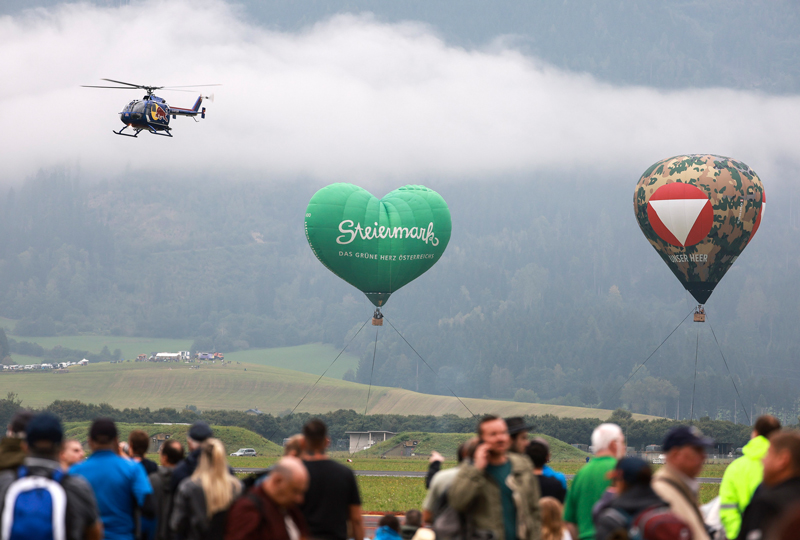
Anyone who has ever watched an extra at an aerobatic demonstration will not worry about their name. Because it’s extra class what these machines do in the sky.
Nevertheless, the name actually goes back to its inventor, Walter Extra. In 1993, the first propeller engine left the plant of his company Extra Aircraft at Schwarze Heide airfield near Dinslaken in Germany. The flying machines of the multiple German master in motor aerobatics are characterised by their extreme manoeuvrability. This is thanks to their strong motorisation, light weight, short wingspan, and large control surfaces such as their relatively large deflections.
The two-seater sisters, the Flying Bulls’ Extra 330LX are used as media machines, for aerobatic briefings and for individual performances at aviation events, but have also made appearances at airshows in Germany and Austria and, in the early days, flew worldwide for the former Red Bull Air Race.
The machines are based on the two-seater Extra 300L. Only real experts will know the differences between the 300 models, because the details are in the shape and size of wings, tail unit and equipment.
The 330LX’s power comes from its six-cylinder Lycoming AEIO-580 engine and Muehlbauer, MTV 9, tri-blade constant speed propeller. This 315 hp combo accelerates the aircraft to a top speed of nearly 410 km/h. The climb rate is up to 975 metres per minute, the maximum flight altitude is about 4,880 meters and this with a maximum range of up to 1,100 km, which, however, is rather a minor matter for aerobatic pilots.
As a further extra, it should be mentioned that both aircraft are certified for glider double towing.
What various numbers mean to passengers could already be seen on the faces of numerous journalists and celebrities such as Smudo, Sebastian Vettel, Oliver Polzer, Christian Schiester, and Daniel Schuhmacher as they disembarked. Up to 8G and many race-like flight manoeuvres let the guests experience the stress and at the same time fascination of aerobatics first hand. The passenger sits in the front seat of the aircraft and looks at a minimal instrumentation that provides information on speed, altitude, and g-load. The rear cockpit is reserved for the pilot and offers all the instruments for monitoring and control.
The Flying Bulls’ Extras 330LX were given their first taste of the skies in 2013. The cockpit is reserved for only a handful of pilots. Anyone allowed to sit in the passenger seat will have made firm friends with the pilot beforehand.
Extra 300 LX
Technical Data: